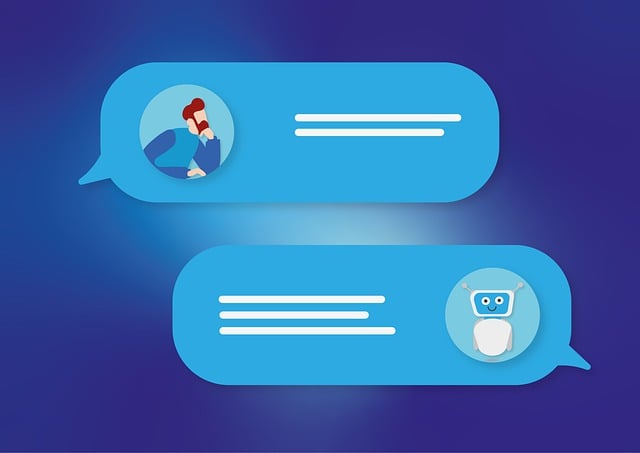Shopify customer service chatbots, powered by AI, enhance support experiences by handling routine tasks and providing 24/7 access to information. These virtual assistants streamline inquiries like product recommendations, order tracking, and returns, allowing human agents to focus on complex issues. When selecting a chatbot for Shopify, prioritize features like personalized recommendations, NLP-driven conversational abilities, and customization options that align with your brand image. Implementing one is straightforward; choose a platform like Tidio, LiveChat, or Intercom from the Shopify App Store, customize it, set up automated responses, and train the chatbot using diverse datasets. Regular training, analysis of chat logs, and monitoring of customer feedback ensure optimal performance. Key metrics for success include response time reductions, conversion rate increases, and positive user feedback.
“Unleash the power of a Shopify customer service chatbot to elevate your online store’s support game! This comprehensive guide explores everything you need to know about these intelligent tools. From understanding their role in streamlining support to choosing the perfect fit for your business, we’ve got you covered. Learn how to implement, train, and optimize your chatbot effectively, plus discover key metrics to measure success. Discover why a chatbot for Shopify is not just a trend but an essential asset for providing instant, efficient customer service.”
- Understanding Shopify Customer Service Chatbots: Their Role and Benefits
- How to Choose the Right Chatbot for Your Shopify Store
- Implementing a Shopify Chatbot: Step-by-Step Guide
- Best Practices for Training and Optimizing Your Shopify Chatbot
- Measuring Success: Evaluating the Performance of Your Shopify Customer Service Chatbot
Understanding Shopify Customer Service Chatbots: Their Role and Benefits

Shopify customer service chatbots are automated tools designed to enhance and streamline the support experience for both businesses and their customers. These intelligent virtual assistants leverage artificial intelligence (AI) to handle a wide range of inquiries, from product recommendations to order tracking, returns, and common questions. By implementing a chatbot for Shopify, businesses can offload routine tasks, allowing human customer service agents to focus on more complex issues.
The role of these chatbots extends beyond simple query resolution. They offer 24/7 availability, ensuring customers receive instant responses regardless of the time zone or day of the week. This improved accessibility translates into higher customer satisfaction and retention rates. Moreover, Shopify chatbots can be integrated with existing customer data, enabling personalized interactions that foster stronger brand relationships.
How to Choose the Right Chatbot for Your Shopify Store

When selecting a chatbot for your Shopify store, consider its alignment with your business needs and customer service goals. Not all chatbots are created equal; some excel in basic query handling while others offer advanced features like personalized recommendations or integration with CRM systems. Look for a solution that matches your budget and scales with your growth.
Focus on the conversational abilities of the chatbot as well. Natural language processing (NLP) technology enables more human-like interactions, ensuring customers receive accurate responses to their queries. Additionally, consider the level of customization available to tailor the chatbot’s personality and tone to align with your brand image. A well-chosen chatbot for Shopify can significantly enhance customer satisfaction and drive sales through efficient, effective communication.
Implementing a Shopify Chatbot: Step-by-Step Guide

Implementing a Shopify chatbot is a straightforward process that can significantly enhance your customer service game. Here’s a step-by-step guide to get you started:
1. Choose a suitable chatbot platform: Several platforms offer integration with Shopify, each with unique features and pricing plans. Research options like Tidio, LiveChat, or Intercom, considering factors like ease of use, automation capabilities, and customer support.
2. Install the chatbot on your Shopify store: Once you’ve selected a platform, install the corresponding app from the Shopify App Store. The installation process is typically simple and guided, requiring basic information to set up your chatbot account.
3. Customize your chatbot: Tailor the chatbot’s appearance and functionality to match your brand identity. This includes designing conversation flows, setting up greetings, and creating relevant responses for common customer inquiries. You can also utilize variables and dynamic content to personalize interactions further.
4. Set up automated responses and triggers: Chatbots excel at automating repetitive tasks. Define scenarios where the chatbot should take action, such as welcoming new visitors, asking qualifying questions, or providing quick product recommendations based on browsing behavior.
5. Train and test your chatbot: Before going live, train your chatbot using sample conversations and customer data (if available). Test its responses and logic to ensure accuracy and effectiveness. Regularly review and refine the conversation flow as needed.
Best Practices for Training and Optimizing Your Shopify Chatbot

When training a Shopify customer service chatbot, it’s crucial to provide diverse and relevant datasets. Gather a wide range of common customer queries, product descriptions, and store policies to ensure your chatbot can understand and respond accurately. Regularly update this data as your business evolves, incorporating new products, promotions, or changes in procedures. The more comprehensive the training, the better equipped the chatbot will be to handle various customer interactions effectively.
To optimize performance, continually analyze chat logs and identify areas where the chatbot struggles. Use these insights to refine its responses and decision-making logic. Implement machine learning techniques to allow the chatbot to learn from each interaction, improving over time. Additionally, monitor customer feedback, adjusting responses accordingly to enhance user satisfaction. Regular training and optimization ensure your Shopify chatbot provides efficient and effective support, creating a seamless shopping experience for your customers.
Measuring Success: Evaluating the Performance of Your Shopify Customer Service Chatbot

Measuring success is a vital aspect of understanding whether your Shopify customer service chatbot is delivering the desired results. It involves evaluating various performance metrics to gauge user satisfaction and the chatbot’s overall effectiveness in handling customer inquiries. One key metric to track is the reduction in response times. By comparing the average wait time for human agents with that of the chatbot, you can determine if it’s providing quicker resolutions, which enhances customer experience.
Additionally, monitoring conversion rates and sales volume after implementing the chatbot offers valuable insights. An increase in these areas suggests that customers are finding the chatbot helpful, leading to more efficient purchases. Analyzing user feedback, such as satisfaction ratings and reviews, is another powerful method to assess performance. This qualitative data provides a deeper understanding of customer preferences and helps identify areas for improvement, ensuring your Shopify chatbot remains a game-changer in providing exceptional customer service.
A Shopify customer service chatbot is a powerful tool to enhance user experience and boost sales. By understanding their role, choosing the right fit, and implementing best practices, businesses can effectively leverage these AI assistants. This strategic approach ensures that customers receive instant support, increasing satisfaction and loyalty. With continuous optimization, a Shopify chatbot can become a game-changer in providing efficient, 24/7 customer service, ultimately driving business growth in today’s digital era.
